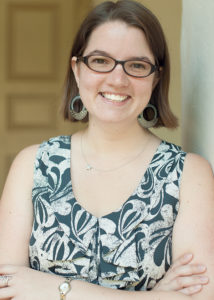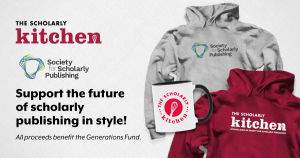Managing Editor, American Historical Association

Please tell us a bit about yourself (e.g. hometown, current locale, course of study).
I’m from Twinsburg, Ohio and I attended nearby Case Western Reserve University in Cleveland, where I double-majored in history and American studies. I have always loved history, but I first encountered and fell in love with women’s and gender history there. I took every class I could on the subject with Professor Renée Sentilles, and she inspired me to go to graduate school. I attended an MA/PhD program in history at the College of William & Mary. I spent six years in the PhD program and left at “all but dissertation” status.
But during my time there, I was lucky to be an editorial apprentice at the Omohundro Institute of Early American History & Culture. There we learned Chicago Style backwards and forwards, learned the differences between editing, copyediting, and proofreading, and so much more. I also volunteered during my late grad school years with the blog Nursing Clio, where I have been managing editor since 2016. When I left graduate school, I knew that editorial work was something I would enjoy.
Describe some of your current responsibilities, and what type of organization you belong to.
Since September 2019, I have been managing editor at the American Historical Association (AHA) in Washington, DC, the largest professional association for historians in the United States. I split my time between a few projects. My biggest responsibility is a monthly news magazine for members, Perspectives on History. Alongside the magazine’s editor, I commission and edit articles on all aspects of historical work, from professional issues to research to teaching. I am also in charge of magazine production, including organizing our workflows, liaising with composition and printing vendors, making corrections, and more. The AHA also has a small booklets program, which I manage, and I contribute to other in-house publications including our annual meeting program.
What was your first scholarly publishing role? How did you get that job? What path led to your current position?
I started my professional editing career at the American Society for Civil Engineers (ASCE) in Reston, Virginia, where I was a journals production editor. ASCE produces 35 journals with a production staff of just 6 people, so that job gave me a strong foundation in all aspects of production. I learned how to do everything from reviewing copyediting to proofs to published material. The job confirmed that working in scholarly publishing was the role for me—even though I had no educational background in civil engineering—I enjoyed helping our authors get their research and expertise out into the world.
When the AHA posted the listing for my current position, I had been at ASCE for two years. It seemed like the dream job to do similar work but with and for historians. I get to combine my two passions—history and publishing—in my current job. And I didn’t even have to relocate!
If there was a pivotal moment or key person in your career development, please describe briefly.
When I was an editorial apprentice at the Omohundro Institute, Gil Kelly was the managing editor of books. Gil was one of those indescribable characters who generations of editorial apprentices have stories about. He drilled us in grammar and editing skills using his “little exercises,” some of which had been written on a typewriter and photocopied for years. Gil died in 2017, but I think of him often, particularly when applying certain specific rules of grammar in my work. (I also wrote about him here.)
What tools, websites, and organizations do you find most valuable for your career development?
Being an SSP member has been a great way to stay informed about trends in scholarly publishing. I participated in the mentoring program in 2018 as a mentee soon after I started my career. I learned so much from being paired with someone with years of experience—so much that I volunteered this year to be a mentor. And as difficult as it can be sometimes, I use Twitter to stay connected with what’s going on among historians. #twitterstorians, as they’re called, is an active community and I have made connections on Twitter that have led to wonderful articles for our newsmagazine.
What are some of the surprises/obstacles that you’ve encountered during your career?
I never expected to be in this career in the first place! But like so many in scholarly publishing, I was an aspiring academic who decided that disseminating knowledge would make me happier than researching and creating it. But one of the biggest surprises is how necessary it has been to stay plugged into the research communities and writers who I publish. When I left graduate school, I would never have guessed that I would still need to know so much about what historians do and how they do it. But only by staying in touch with historians in academia, public history, and all the other places historians work have I been successful in my work.
What do you wish you knew more about?
I always wish I knew more about the tech side of publishing. Learning HTML, XML, and other programming languages is difficult for me, and I don’t know if I’ll ever have time to sit down and study them.
What advice would you give to people interested in a career in scholarly communications?
The field of scholarly communications involves a lot of different things—editorial, production, marketing, technology, libraries, and more. Try to learn a little bit about each of these areas. Reach out to those currently working in these fields to see what they like about their jobs, what skills they find essential, and what challenges they face. Going in with your eyes open about both the joys and difficulties of these careers will only help you in the long run.

